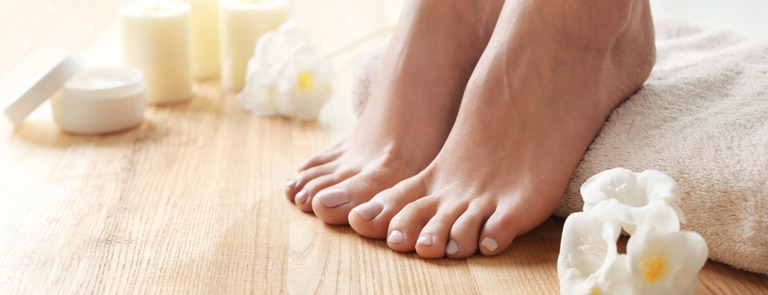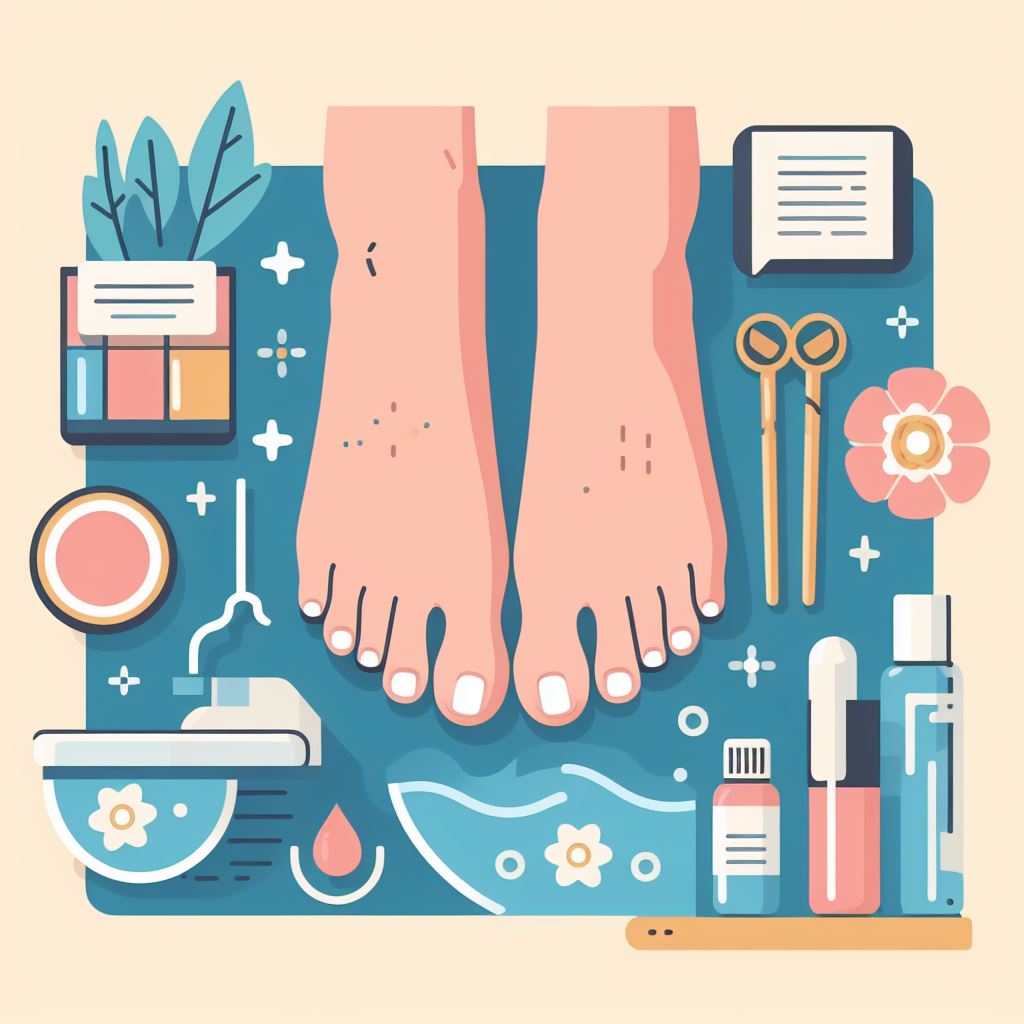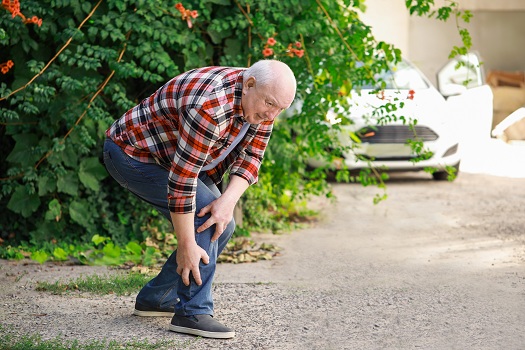Caring for dry cracked heels involves regular exfoliation and moisturization to promote healing and prevent further damage. Dry cracked heels can be painful and uncomfortable, but with proper care, you can restore moisture and softness to your feet.
Neglecting your heels can lead to deeper cracks and potential infections. We will discuss some effective ways to care for dry cracked heels, including using foot scrubs, moisturizers, and protective socks. By following these simple tips, you can improve the condition of your heels and enjoy healthy, smooth feet.
Remember, prevention is key, so it’s important to incorporate these practices into your regular foot care routine.
Caring For Dry Cracked Heels: Your Guide To Soft, Smooth Feet
The importance of foot health cannot be emphasized enough. Dry and cracked heels are not only unsightly but can also be painful and uncomfortable. There are several common causes of this condition, including:
- Prolonged standing or walking, putting excessive pressure on the feet
- Wearing ill-fitting or uncomfortable shoes
- Winter weather, causing dry skin and decreased moisture levels
- Medical conditions like diabetes or thyroid issues
- Poor hygiene and lack of foot care
This guide offers practical tips and remedies to help you care for your dry cracked heels, ensuring soft and smooth feet. Regular moisturizing using a specialized foot cream or petroleum jelly is a simple yet effective way to keep your skin hydrated. Exfoliation with a pumice stone or foot scrub helps remove dead skin cells, restoring smoothness.
| Severe pain or discomfort | Experiencing intense pain or discomfort while walking or standing. |
| Bleeding or open wounds | Noticing any bleeding, open wounds, or signs of infection on the heels. |
| No improvement with home remedies | If home remedies or over-the-counter treatments fail to provide relief or show improvement after a reasonable amount of time. |
| Diabetes or compromised immune system | If you have diabetes or a weakened immune system, it is best to consult a healthcare professional to avoid potential complications. |
Seeking professional advice and treatment in these cases can help prevent further complications and promote faster healing of dry cracked heels.
Daily Habits For Preventing Dry Heels
Proper hydration is essential for maintaining healthy skin, including the skin on your heels. Lack of moisture can lead to dry, cracked heels. Here are some everyday practices you can follow to keep your feet moisturized and prevent dryness:
- Hydration: Ensure you drink an adequate amount of water throughout the day. Staying hydrated helps maintain the moisture balance in your skin.
- Choose the right footwear: Opt for shoes that provide proper support and cushioning. Well-fitting shoes prevent excessive pressure on the heel, minimizing the chances of dryness.
- Foot hygiene: Regularly clean and moisturize your feet to keep them fresh and prevent dryness. Use mild soap and warm water to wash your feet and gently pat them dry.
- Moisturizing: Apply a thick, moisture-rich foot cream or lotion on your feet, emphasizing on the heels. Look for products that contain ingredients like shea butter or glycerin, known for their hydrating properties.
By incorporating these habits into your daily routine, you can effectively prevent dry, cracked heels and maintain healthy, moisturized skin. Remember, healthy feet contribute to overall well-being!
Step-by-step Heel Care Routine
Gentle cleansing practices: Keep your feet clean by washing them with mild soap and warm water. Avoid harsh soaps or hot water, as they can worsen dryness. After washing, gently pat your feet dry with a soft towel.
Exfoliating dead skin safely: Regularly exfoliate your dry cracked heels to remove dead skin cells. You can use a pumice stone or a foot scrub. Apply light pressure and move in circular motions to avoid causing any irritation or injury.
Moisturizing techniques: Apply a thick, rich moisturizer to your clean and dry heels. Look for products that contain ingredients like urea or lactic acid to help soften and hydrate your skin. Massage the moisturizer into your heels, focusing on the affected areas. For added hydration, wear socks overnight to lock in the moisture.
| Gentle cleansing practices | Exfoliating dead skin safely | Moisturizing techniques |
|---|---|---|
| Keep feet clean with mild soap and warm water. | Regularly exfoliate with a pumice stone or foot scrub. | Apply a thick moisturizer with urea or lactic acid. |
| Pat feet dry with a soft towel. | Use gentle circular motions to avoid irritation. | Massage moisturizer into heels, focusing on affected areas. |
| Wear socks overnight for added hydration. |
Diy Remedies For Dry Heels
Having dry cracked heels can be uncomfortable and unsightly. But the good news is that there are several DIY remedies you can try at home. Natural ingredient soaks are a great way to soothe and hydrate your skin. You can try soaking your feet in warm water with Epsom salts, apple cider vinegar, or tea tree oil. These ingredients can help to soften dead skin and promote healing.
Homemade exfoliating scrubs are another effective way to treat dry heels. You can make a scrub by mixing coarse sea salt or brown sugar with honey, olive oil, or coconut oil. Gently massage the scrub onto your heels to remove dead skin cells and improve blood circulation.
| Moisturizer recipes |
|---|
| – Shea butter and vitamin E oil: Blend together equal parts of shea butter and vitamin E oil for a rich moisturizer. |
| – Avocado foot mask: Mash half an avocado and mix it with a tablespoon of honey. Apply the mixture to your heels and leave it on for about 20 minutes before rinsing. |
| – Coconut oil and lavender oil: Combine a tablespoon of coconut oil with a few drops of lavender oil for a fragrant and nourishing moisturizer. |
| – Aloe vera gel: Apply a thin layer of aloe vera gel onto your heels before bed and leave it on overnight for deep hydration. |
With these DIY remedies, you can pamper your feet and say goodbye to dry cracked heels. Remember to be consistent with your routine and moisturize daily for best results.
Advanced Treatment Options
Dry cracked heels can be a painful and unsightly condition, but there are advanced treatment options that can help alleviate the problem. Over-the-counter products, such as moisturizing creams and lotions specifically designed for dry heels, can provide some relief. These products typically contain ingredients like urea, salicylic acid, or alpha-hydroxy acids that help to soften the skin and promote healing.
However, if over-the-counter treatments don’t seem to be effective, it may be time to consider prescription treatments. A dermatologist can prescribe stronger creams or ointments that contain ingredients like corticosteroids or retinoids to help heal the cracked skin.
In addition to topical treatments, utilizing pumice stones and foot files can also help to remove dead skin and smooth out rough patches on the heels. It’s important to use these tools gently and in conjunction with moisturizing products to avoid further irritation.
Protecting Heels In Different Seasons
During summer, it is important to take proper care of your feet to prevent dry, cracked heels. Here are some foot care tips for the summer season:
- Stay hydrated by drinking plenty of water to maintain moisture levels in your body.
- Exfoliate your feet regularly to remove dead skin cells and prevent the build-up of rough skin.
- Apply a moisturizer that contains ingredients like urea or glycerin to help hydrate and soften your heels.
- Protect your feet from the sun by applying sunscreen with at least SPF 30, especially if wearing open-toed shoes.
- Avoid walking barefoot on hot surfaces to prevent burns and dryness.
When it comes to winter, the cold weather can further contribute to dry, cracked heels. Here are some strategies to protect your heels during the winter season:
- Keep your feet warm and dry by wearing socks and appropriate shoes that provide insulation.
- Moisturize your feet daily with a thick, emollient cream or petroleum jelly to help lock in moisture.
- Avoid using hot water while washing your feet as it can strip away natural oils and cause dryness.
- Use a humidifier in your home to add moisture to the air and prevent dryness.
- Avoid soaking your feet for long periods of time as it can further dehydrate your skin.
Socks And Sleeves For Heel Hydration
Proper care and hydration are essential for treating dry cracked heels, and one effective method is to use socks and sleeves specifically designed for heel hydration. These products are made from materials that offer optimal moisture to help heal and prevent dryness.
During nighttime, it is recommended to apply a deeply moisturizing cream or petroleum jelly to your heels, and then slip on a pair of moisturizing socks or sleeves. The socks and sleeves create a barrier, helping the moisturizer to penetrate and lock in the hydration.
The material used in these products often contains moisturizing ingredients such as shea butter and aloe vera, which further enhance the healing process.
By wearing socks and sleeves during the night, you can wake up with softer and more hydrated heels. Incorporating this simple step into your skincare routine can make a big difference in treating and preventing dry cracked heels.
Balancing Professional Pedicures And Home Care
| 1. Specialized treatment: | Professional pedicures involve specialized treatments that can effectively address dry and cracked heels. They have access to advanced tools, such as electric files and pumice stones, which can efficiently remove rough skin and calluses. |
| 2. Deep moisturization: | Experts in foot care utilize nourishing creams and lotions that deeply moisturize the skin, helping to repair and prevent dryness. They also have knowledge of specific ingredients that are beneficial for healing cracked heels. |
| 3. Professional guidance: | By seeking professional foot care, you gain access to expert guidance on how to care for your feet at home. They can provide personalized advice on proper footwear, exercises, and maintenance routines to improve the condition of your heels. |
| 4. Enhancing overall foot health: | Regular professional foot care can help identify and address underlying foot issues that may contribute to dry and cracked heels. Through a comprehensive assessment, experts can recommend appropriate treatments and preventive measures. |
To maintain the benefits of professional pedicures, it is essential to incorporate home care into your routine. Consistently moisturize your feet at home with hydrating creams and oils, paying extra attention to your cracked heels. Exfoliate regularly with gentle scrubs or foot files to remove dead skin. Wear comfortable and supportive shoes to prevent further damage. Regularly trim your toenails and keep them clean to minimize the risk of infections. Lastly, follow the advice provided by your foot care expert to ensure the best long-term results.
Common Mistakes To Avoid
When caring for dry cracked heels, it is important to avoid common mistakes that can worsen the condition. One such mistake is over-exfoliating the feet, which can lead to irritation and further dryness. While exfoliation can help remove dead skin cells, overdoing it can strip away the natural oils and cause the skin to become even drier. It is recommended to exfoliate the feet 1-2 times a week using a gentle scrub or a pumice stone.
Another mistake to avoid is neglecting foot care in daily routines. Many people focus on moisturizing their face and body but forget to give attention to their feet.
To prevent dry cracked heels, it is important to moisturize the feet daily, especially after showering or bathing. Look for moisturizers that contain ingredients like shea butter, glycerin, or urea, as these can help hydrate and soften the skin.
Tracking Progress Toward Healthier Feet
Setting realistic foot care goals is essential in caring for dry cracked heels. It helps establish a clear focus and provides a sense of direction. Start by assessing the current condition of your feet and identifying the specific issues you want to address.
This could include reducing pain, improving appearance, or enhancing overall foot health. Once you determine your goals, break them down into achievable targets. Documenting changes and improvements along the way can be a motivating factor.
Consider keeping a foot care journal where you note daily progress, strategies that work, and any setbacks. Take photographs regularly to visually document changes. This can help you stay on track and track your foot care routine’s effectiveness.
Remember, foot care is a journey, not a quick fix. Celebrate small victories and be patient with yourself. With consistent effort and monitoring, you can make substantial progress toward healthier feet.

Credit: www.hollandandbarrett.com
Frequently Asked Questions For Caring For Dry Cracked Heels
What Is The Fastest Way To Heal Cracked Heels?
To heal cracked heels quickly, moisturize daily, especially after washing and exfoliating. Use a thick moisturizer or petroleum jelly and wear breathable socks to retain the moisture. Avoid walking barefoot and use gentle foot scrubs to remove dead skin. Regularly visit a podiatrist for professional treatment if needed.
What Can I Put On Severely Dry Cracked Heels?
For severely dry cracked heels, try using a foot cream with moisturizing ingredients like shea butter or glycerin. Apply it regularly and wear socks overnight to help lock in the moisture. Exfoliating with a pumice stone can also help remove dead skin and promote healing.
What Causes Extremely Dry Cracked Heels?
Extremely dry cracked heels can be caused by prolonged exposure to dry conditions, insufficient moisture, repetitive pressure, obesity, aging, or certain medical conditions like diabetes or hypothyroidism.
How Do You Get Rid Of Dry Skin On Heels Fast?
To quickly get rid of dry skin on heels, follow these steps: 1. Soak your feet in warm water for 15 minutes to soften the skin. 2. Gently exfoliate your heels using a pumice stone or foot scrub. 3. Apply a thick moisturizer or petroleum jelly to lock in moisture.
4. Repeat this routine daily to keep your heels smooth and hydrated.
Conclusion
To sum up, taking care of dry and cracked heels is vital to maintain overall foot health. By following a consistent routine that includes exfoliating, moisturizing, and protecting the heels, you can prevent and treat this common issue. Remember to wear proper footwear, practice good hygiene, and seek professional help if needed.
Your feet deserve the same attention as the rest of your body, so prioritize their care and enjoy the benefits of smooth and healthy heels.



